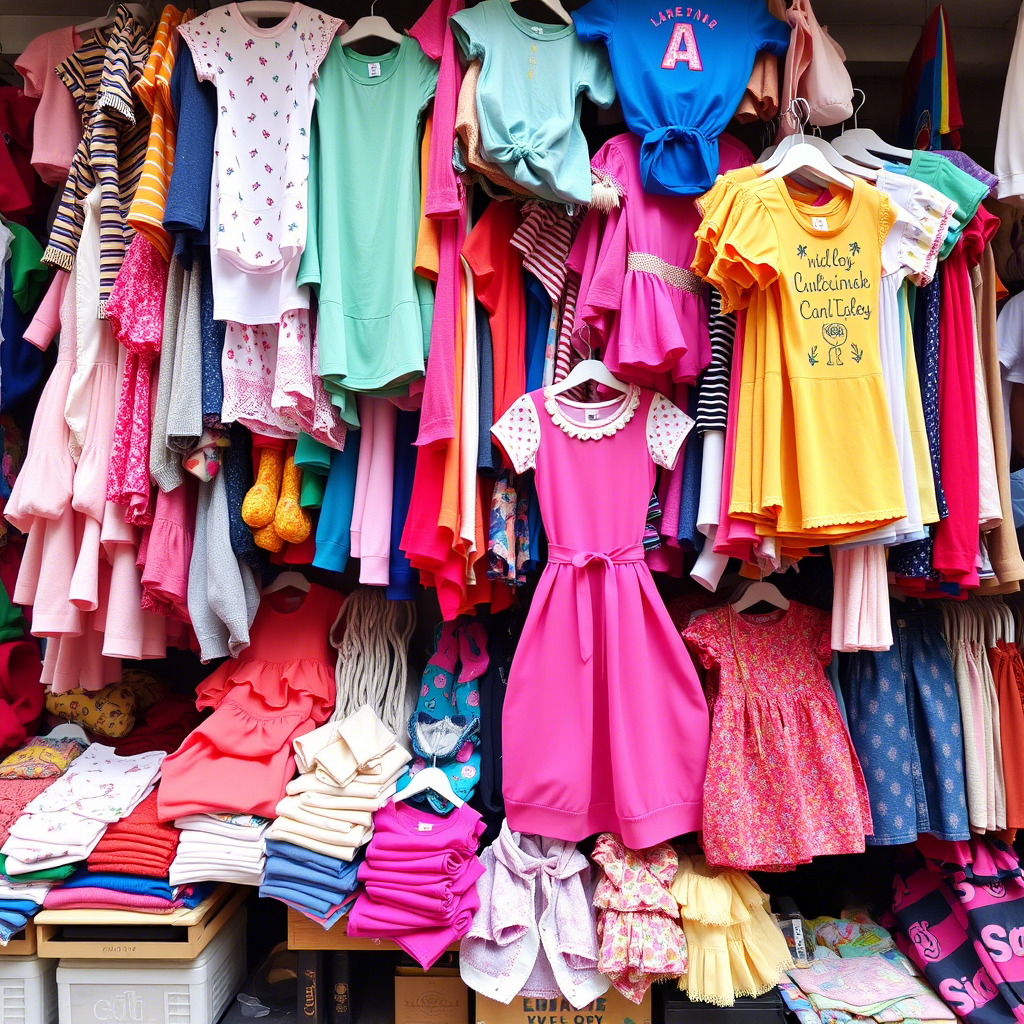Children Clothing Wholesale Suppliers and Distributors
The children’s clothing industry is a thriving market, driven by the growing demand for high-quality, affordable, and fashionable apparel. Wholesale suppliers and distributors play a crucial role in this industry, connecting manufacturers with retailers and ultimately, with consumers. In this article, we will explore the world of children clothing wholesale suppliers and distributors, highlighting their significance, key considerations, and best practices.
Understanding the Children’s Clothing Wholesale Market
The children’s clothing wholesale market is a complex and competitive landscape. To succeed, suppliers and distributors must understand the needs of their customers, including retailers and manufacturers.
- Market Trends: The market is influenced by trends such as sustainability, comfort, and technology integration. For instance, eco-friendly clothing is becoming increasingly popular among parents.
- Target Audience: Identifying the target audience is crucial. This includes understanding the age group, geographical location, and purchasing behavior of the end-consumer.
- Product Variety: Offering a diverse range of products is essential. This includes clothing for different age groups, occasions, and climates.
 Catalogs and product offerings are critical in showcasing the variety and quality of children’s clothing. A well-designed catalog can attract potential buyers and increase sales.
Catalogs and product offerings are critical in showcasing the variety and quality of children’s clothing. A well-designed catalog can attract potential buyers and increase sales.
Sourcing High-Quality Products
Sourcing products from reliable manufacturers is vital for wholesale suppliers.
- Quality Control: Ensuring that products meet certain quality standards is essential. This involves inspecting products for material quality, durability, and safety.
- Manufacturer Relationships: Building strong relationships with manufacturers can lead to better pricing, priority access to new products, and improved quality control.
- Product Compliance: Ensuring that products comply with international safety standards and regulations is crucial. This includes compliance with laws related to child safety and labor practices.
Effective Distribution Strategies
Effective distribution is key to getting products from the manufacturer to the retailer efficiently.
- Logistics and Shipping: Developing a reliable logistics and shipping system is vital. This includes managing inventory, packaging, and delivery.
- Inventory Management: Managing inventory levels to meet demand without overstocking is a delicate balance. It requires accurate forecasting and efficient stock management systems.
- Market Reach: Expanding market reach through various distribution channels, such as online platforms and physical stores, can increase sales and brand visibility.
 Market stalls and physical retail spaces remain important distribution channels, offering a tangible shopping experience for consumers.
Market stalls and physical retail spaces remain important distribution channels, offering a tangible shopping experience for consumers.
Marketing and Sales Strategies
To stand out in a competitive market, wholesale suppliers and distributors need effective marketing and sales strategies.
- Digital Marketing: Utilizing digital marketing channels such as social media and email marketing can help reach a wider audience.
- Trade Shows and Events: Participating in trade shows and industry events can provide opportunities to showcase products and build industry connections.
- Building Retailer Relationships: Developing strong relationships with retailers can lead to repeat business and recommendations.
For example, a wholesale supplier might consider showcasing their products, such as boys’ coats, at trade shows to attract retailers.
Managing the Supply Chain
Managing the supply chain effectively is critical for ensuring that products are delivered on time and in good condition.
- Supply Chain Visibility: Having visibility into the supply chain can help identify potential issues before they become major problems.
- Risk Management: Developing strategies to mitigate risks such as supply chain disruptions is essential.
- Sustainability Practices: Incorporating sustainable practices into the supply chain can enhance brand reputation and appeal to environmentally conscious consumers.
 A well-organized warehouse is essential for efficient inventory management and order fulfillment. It can also serve as a showroom for potential buyers.
A well-organized warehouse is essential for efficient inventory management and order fulfillment. It can also serve as a showroom for potential buyers.
Exploring New Product Lines
Staying competitive in the children’s clothing wholesale market involves continuously assessing and potentially expanding product lines.
- Market Research: Conducting market research to identify gaps in the market or emerging trends.
- Product Development: Collaborating with manufacturers to develop new products that meet emerging consumer demands.
- Diversification: Considering diversification into related product categories, such as children’s accessories, can provide additional revenue streams.
For more information on diverse product offerings, you can explore Lezon Kids’ product range.
Conclusion
The children’s clothing wholesale supply and distribution industry is complex and competitive. Success in this market requires a deep understanding of consumer trends, effective sourcing and distribution strategies, and a commitment to quality and customer service. By staying informed about market trends, building strong relationships with manufacturers and retailers, and leveraging digital marketing and sales strategies, wholesale suppliers and distributors can thrive. As the industry continues to evolve, embracing sustainability, technology, and innovation will be key to long-term success.

Comments